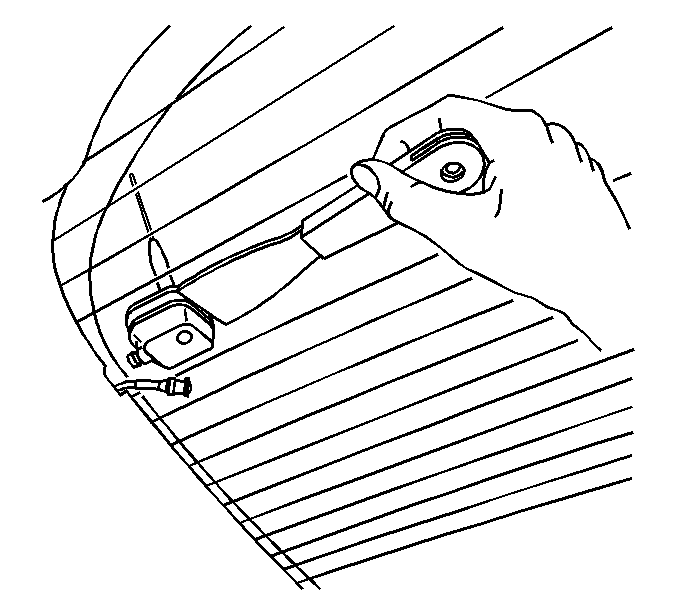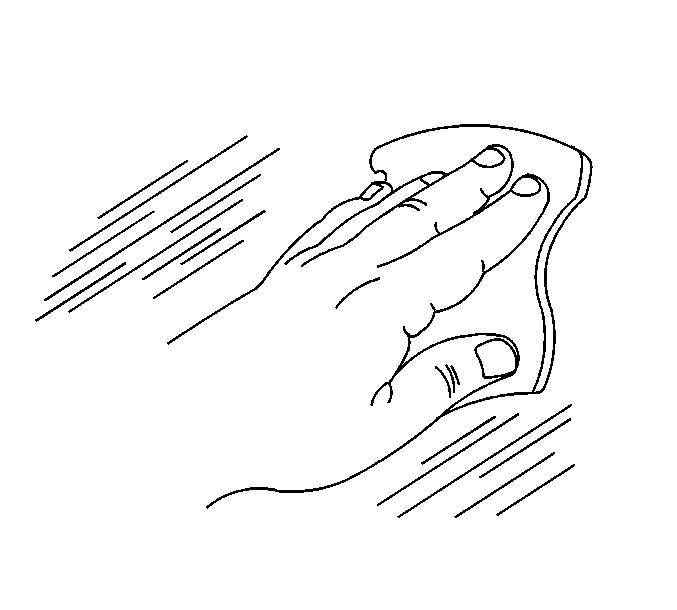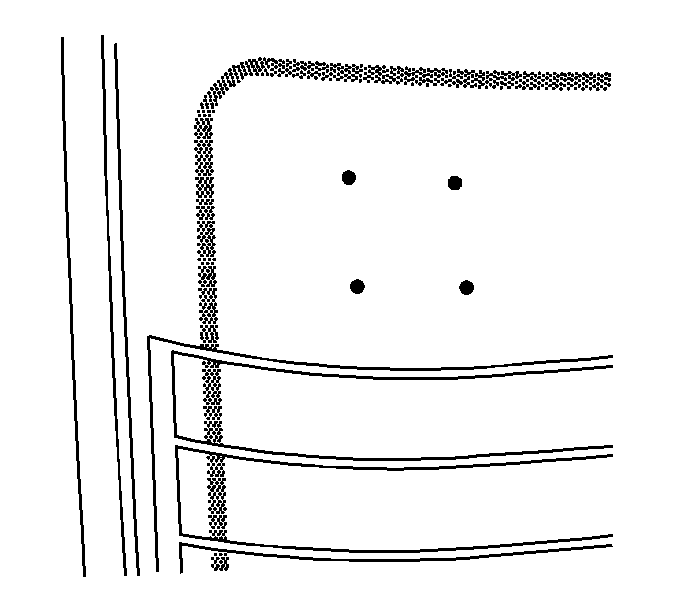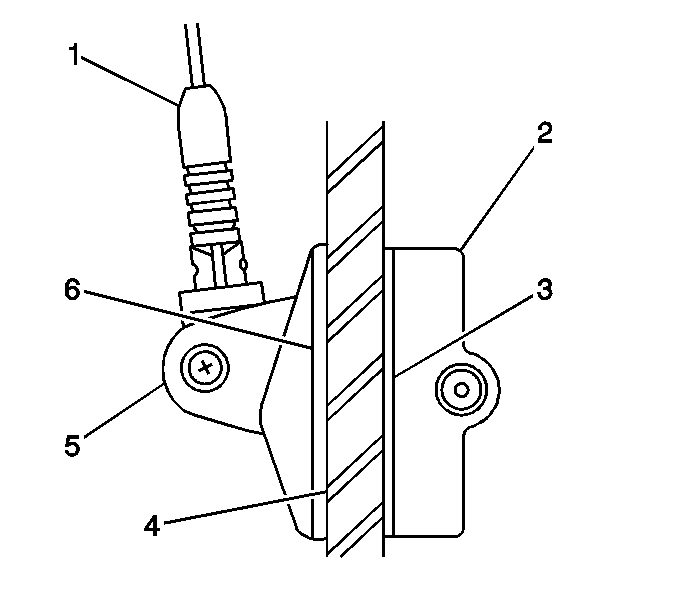Removal Procedure

Important: A new cellular communication antenna design was introduced during the
2002 model year. The early 2002 and past model cellular communication antenna
parts are not interchangeable. The inner and outer antenna coupling and the
antenna mast can not be interchanged between designs. If the parts from the
two designs are interchanged the performance of the cellular communication
system will be adversely affected.
The antenna and coupling designs can be identified visually:
| • | Early 2002 and previous model cellular communication antennas (1)
can be identified by the round shape on the antenna tip. |
| • | The new 2002 cellular communication antenna (4) can be identified
by a cylindrical, slightly tapered shape on the antenna tip. |
| • | Early production, and previous model cellular communication antenna
inner coupling (2) can be identified by the bevel on all four sides
of the inner antenna coupling. |
| • | The new design cellular communication antenna inner coupling (6)
can be recognized square cut sides with rounded edges. |
| • | Early production, and previous model cellular communication antenna
outer coupling (3) can be recognized by horizontal grooves cut in the
outer coupling. |
| • | The new design cellular communication antenna outer coupling (5)
can be recognized by the smooth surface of the outer antenna coupling. |
| • | The adhesion promoter must be used to assure adequate bonding of the
coupling. |
| • | To obtain maximum adhesion between the new mobile antenna couplings
and the glass surface, the couplings and the glass must be kept dry and above
15°C (60°F) during the installation. Allow 6 to 8 hours, at
15°C (60°F), for the adhesive to cure after installation. Otherwise
the new coupling may come not adhere. |
| • | Do not use using any type of glue, adhesive tapes, etc. to reinstall
the original couplings. Doing so may eliminate the cellular signal transfer
through the glass and reduce the maximum performance of the system, including
the air bag deployment notification. |

- Disconnect the coaxial
cable from the inner coupling of the mobile communication antenna.
Notice: If you use a razor blade or other sharp tool in order to remove the
adhesives or foreign objects from the inside of the rear window, use the blade
carefully. Damage to the grid lines may result.
- Use a small wide-bladed plastic tool to cut the double
back tape material while lifting up on the inner antenna coupling.
Installation Procedure

- Clean the inside of the
rear window with an alcohol wipe.
- Dry the glass thoroughly using a lint free cloth.
Important:
| • | The adhesion promoter must be used to assure adequate bonding of the
coupling. |
| • | Mask off or protect areas before applying the adhesion promoter. |
- Apply Glass Adhesion Promoter P/N 12378555 (88901239 in Canada)
to the rear window in the area where you will install the antenna coupling.
Follow the Glass Adhesion Promoter instructions on the product label.
Follow the Glass Adhesion Promoter instructions on the product label.
Important:
| • | The RF connections for the inner antenna coupling should run parallel
to the defogger gridline. |
| • | Align the inner and the outer antenna couplings. |
| • | Do not touch the adhesive backing on the antenna coupling. |
- Remove the protective film from the adhesive backing on the inner antenna
coupling.

- Align the inner antenna
coupling either to the 4 locating marks on the rear window above the
defogger gridline, or to the existing exterior coupling.

- Press firmly on all 4 corners
and on the center of the antenna inner coupling (2) in order to ensure
proper adhesion to the rear window (4). Hold pressure on the inner
coupling (2) for 10-30 seconds.
- Ensure that no gaps occur between the couplings (5,2) and
the rear window (4).
- Connect the coaxial cable to the inner coupling (2).
- Keep the vehicle dry. Allow 6 to 8 hours, at 15°C (60°F),
for the adhesive to cure after installation.





